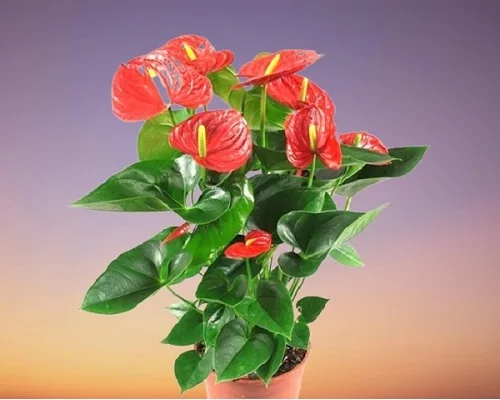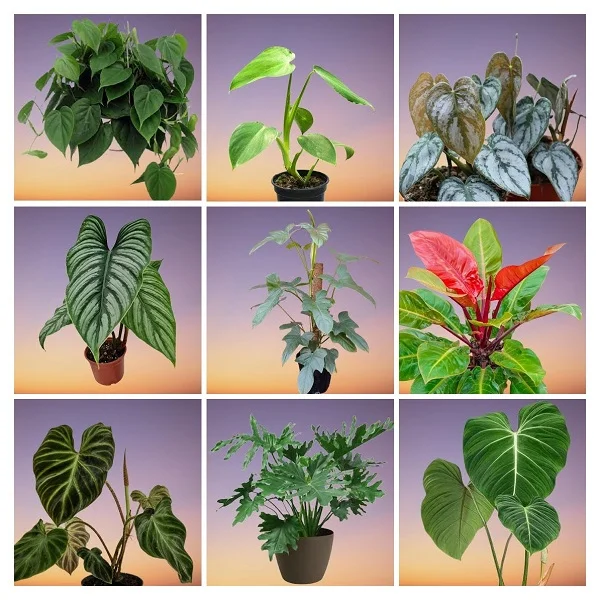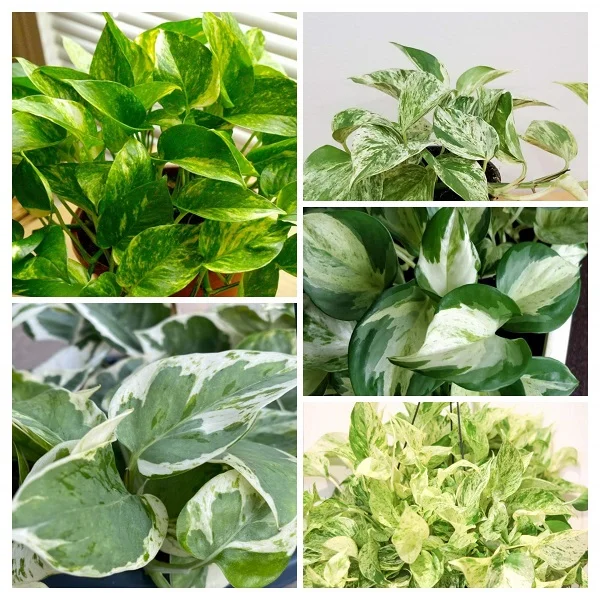14 Rare Anthurium Plants with Names and Pictures
Some links in this post may be affiliate links
Anthuriums Plants have been grown in the home for a long period of time and are favored due to their spectacularly patterned leaves and vibrant flowers.
There are about 1,000 species in the Anthurium genus belonging to the family Araceae. Anthuriums are native to the Americas, being distributed from northern Mexico to northern Argentina and parts of the Caribbean.

Some Anthurium varieties are considered rare plants as they are not easily available. As such, these rare varieties are quite expensive to acquire because they have not been reproduced in large quantities. Others like these 10 Anthurium varieties are readily available in the market.
Anthuriums are considered toxic to both humans and pets due to the presence of oxalate crystals. If ingested these crystals cause digestive distress, breathing problems and skin irritation.
Therefore, keep Anthurium Plants out of the reach of children, cats, dogs and other pets. In addition, always wear gloves when handling these plants and wash your hands thereafter.
14 Magnificent Rare Anthuriums
The Rare Anthuriums include Anthurium veitchii, Anthurium warocqueanum, Anthurium clarinervium, Anthurium dorayaki, Anthurium pallidiflorum, Anthurium magnificum, Anthurium papillilaminum among others.
1. Anthurium veitchii (King Anthurium)
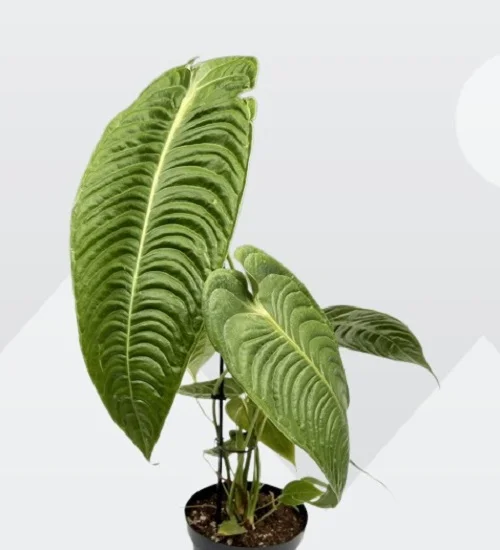
Anthurium veitchii which goes by the common name King Anthurium is a 3-6 feet tall by 3-4 feet wide plant and is native to the tropical rain forests in Colombia, South America.
King Anthurium is a slow-growing plant whose 6 feet long leaves have a corrugated appearance. A new leaf may take upto 3 months to develop. It comes in two forms; the narrow-leaved form and the wide-leaved form.
Anthurium veitchii grows best bright indirect light, average warmth of 18-280C, humidity of 60-70% and consistently moist, rich, well-draining potting soils coupled with fortnightly feeding during the growing season.
Learn more on how to grow and care for Anthurium veitchii
2. Anthurium warocqueanum (Queen Anthurium)
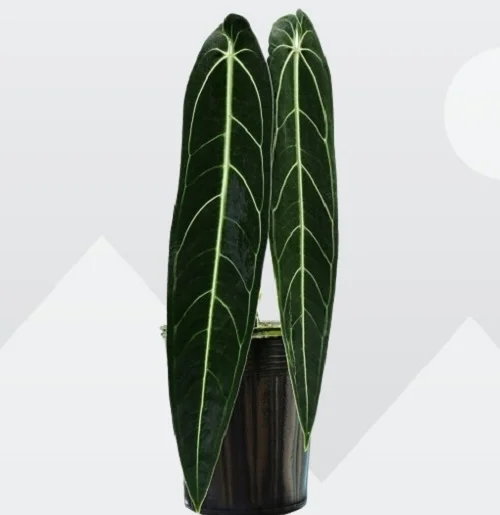
Anthurium warocqueanum commonly called Queen Anthurium is native to Colombia, South America. It can grow to a height of 3-4 feet and a width of 3-4 feet.
Queen Anthurium is a velvet-leaved Anthurium as it bears short hairs on the leaves giving it a velvety texture. The leaves range from light-green to very dark greenish-black and mature to 3-4 feet long by about 1 foot wide.
Queen Anthurium and its relatives Anthurium brownii and Anthurium metallicum are some of the best large-leafed Anthurium plants for the large spaces.
Anthurium warocqueanum blossoms in bright indirect light, average warmth of 18-280C, humidity of 60-80% and moist, fertile, well-drained potting soil coupled with monthly feeding in spring and summer.
Read more on how to grow and care for Anthurium warocqueanum
3. Anthurium clarinervium (Velvet Cardboard Anthurium)
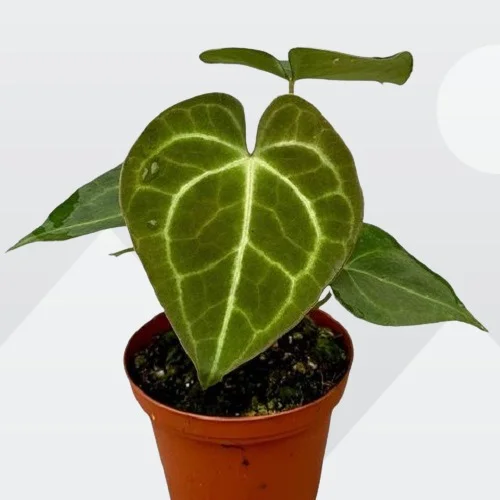
Anthurium clarinervium often called Velvet Cardboard Anthurium is a rare Anthurium variety native to Mexico in South America where it is found growing as an epiphyte, climbing on tree-trunks to get to the canopy for sunlight.
Velvet Cardboard Anthurium is liked for its venation pattern whose 1 cm wide veins vary in color between ivory and light green. The ovate, deeply-lobed, velvety leaves, resemble a love heart with whitish veins.
It is often mistaken for Anthurium crystallinum and Anthurium magnificum due to the their similarity in appearance though they differ in size and leaf presentation.
Anthurium clarinervium grows best in bright indirect light, average warmth of 18-270C, humidity of 50-60% and moist, fertile potting mix coupled with fortnightly feeding during the growing period.
Learn more on how to grow and care for Anthurium clarinervium
4. Anthurium pallidiflorum
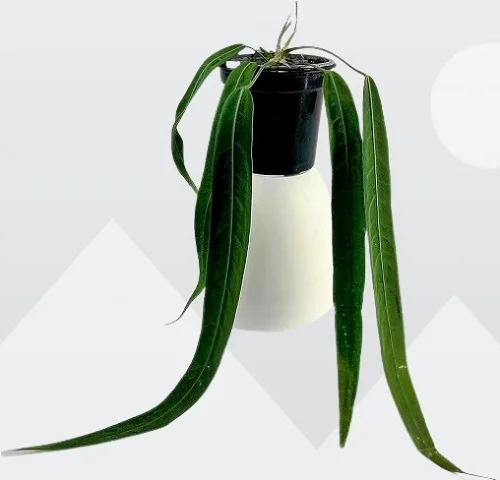
Anthurium pallidiflorum also called Pale-Flowered Anthurium is a threatened Anthurium variety due to loss of its natural habitat. It is endemic to Ecuador in the subtropical or tropical moist lowland forests.
Pale-Flowered Anthurium is a strap leaf anthurium similar to Anthurium vittariifolium but unlike Anthurium vittariifolium its leaves bear a prominent, light-green mid-rib, are more pointed at the apex and rounded at the base. Both plants are among the best plants for a hanging basket, tabletop or pedestal where they can display their beautiful leaves.
Anthurium pallidiflorum thrives in bright indirect light, average warmth of 18-270C, humidity of 60-70% and moist, fertile potting mix coupled with fortnightly feeding in the growing season.
Read more on how to grow and care for Anthurium pallidiflorum
5. Anthurium magnificum

Anthurium magnificum bears large, cordate, dark-green, velvety leaves with burgundy leaves and prominent veining making it resemble Anthurium crystallinum.
The leaves in Anthurium magnificum are up to 18-24 inches long and 20 inches wide when mature which places it among the large-leafed plants ideal for a bold statement in any space.
Anthurium magnificum blossoms in bright indirect light, moderate warmth of 18-270C, humidity of 60-70% and consistently moist, fertile potting mix coupled with monthly feeding in spring and summer.
Learn more on how to grow and care for Anthurium magnificum
6. Anthurium crystallinum 'Dorayaki'
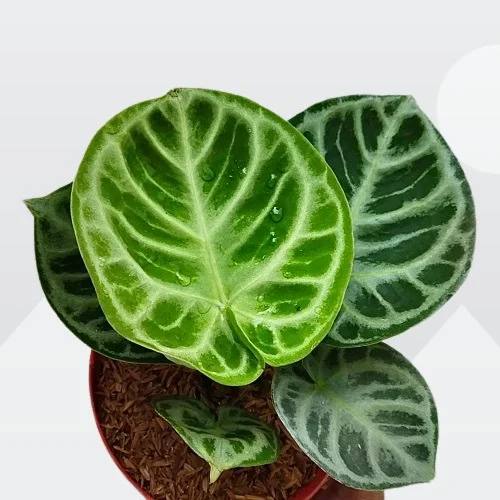
Anthurium Dorayaki is a pretty, compact, low-growing hybrid of Anthurium crystallinum. It bears thick, round-shaped, dark-green leaves which have wide white veins and may give a silvery sheen when viewed at some angles.
Anthurium Dorayaki is often mistaken for Anthurium Silver Blush which has very silvery foliage but Anthurium Dorayaki only has broad silver veins.
Anthurium crystallinum 'Dorayaki grows best in bright indirect light, warm and humid conditions and moist, rich, well-drained soil with regular feeding in the growing period.
7. Anthurium papillilaminum

Anthurium papillilaminum bears magnificent, very dark-green, cordate, velvety leaves with slightly paler major veins on short stems. It bears a green spadix which is held above the leaves.
Anthurium papillilaminum is native to Panama in Central America where it is found growing terrestrially on the forest floors as an understory plant.
To promote lush growth for Anthurium papillilaminum grow it under bright indirect light, warm and humid conditions and consistently moist, loose, free-draining soil that is rich in organic matter. Feed it monthly with a balanced, water-soluble fertilizer during the growing season.
8. Anthurium splendidum
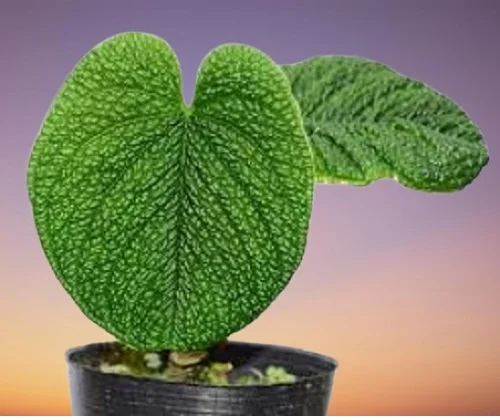
Anthurium splendidum often called Mottled Anthurium is a unique variety. It bears large, glossy leaves with distinct white veins and mottled patterns which may be 1 ft wide at maturity.
Anthurium splendidum is native to the rainforests in Eucador and Colombia, South America where it is found growing in the wet, fertile forest floors.
Anthurium splendidum requires more than average humidity (upto 70%) and is thus perfect for a terrarium as exposure to low humidity leads to crispy leaves.
In addition, to keep Anthurium splendidum happy, give it bright indirect light and consistently moist, rich, well-drained potting mix coupled with monthly feeding in spring and summer.
9. Anthurium clidemioides
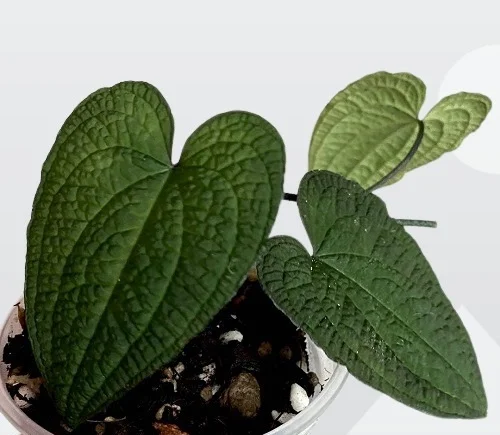
Anthurium clidemioides is a vining variety with almost stalkless, bullate (blister-like swellings) leaves which can be light to very dark green in color. It climbs by means of roots produced between nodes.
Anthurium clidemioides is native to tropical rainforests in Costa Rica, Panama, and Colombia where it found growing on trees epiphytically.
Anthurium clidemioides requires upto 80% humidity as low humidity will result in crispy leaves, bright indirect light, warm temperatures of 18-260C and consistently moist, fertile, well-drained soil.
10. Anthurium regale
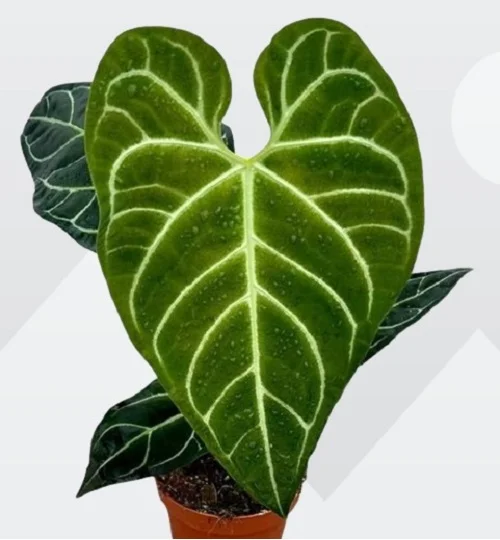
Anthurium regale is a spectacular rare variety with large, cordate, slightly velvety leaves with one prominent vertical white vein in the center, dividing the leaf in half and several smaller, lateral veins as offshoots.
Anthurium regale is native to the forested areas in Peru, South America where it is found growing epiphytically on trees for support to get to the tree canopies for sunlight.
Like most Anthuriums, Anthurium regale thrives in bright indirect light, warm and humid conditions and moist, loose free-draining soil with regular feeding in the growing period.
11. Anthurium balaoanum
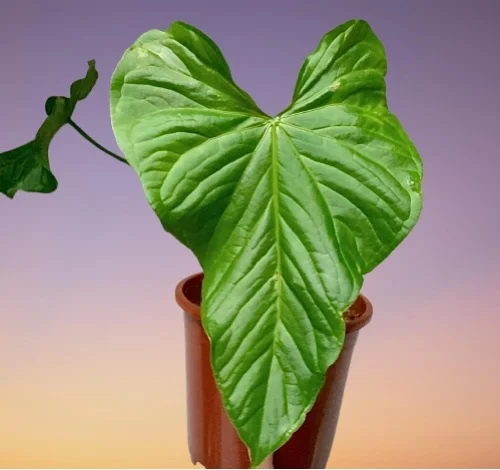
Anthurium balaoanum is a beautiful variety which bears enormous, heart-shaped, ruffled, leathery leaves with a pronounced sinus and are held by long (upto 0.5 metres) petioles.
Anthurium balaoanum is native to the Balao region in Ecuador, South America where it grows as an hemiepiphyte; starting off on the forest floors afterwhich it begins to climb on tree trunks to the canopies to get sunlight.
Anthurium balaoanum grows best in bright indirect light, upto 70% humidity, temperatures of 21-320C, moist, rich, well-drained soil. To grow the large leaves, provide the plant with a moss-pole or some form of support.
12. Anthurium Macrolobium
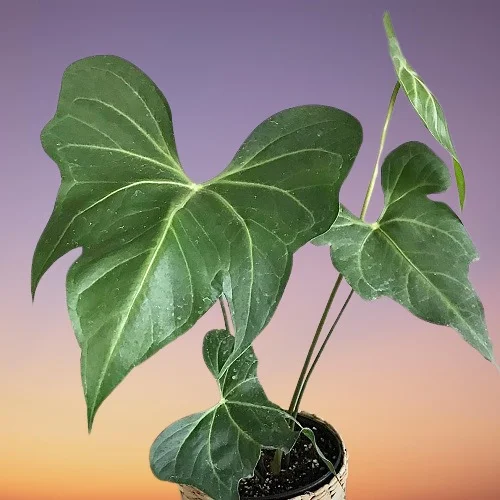
Anthurium Macrolobium is a hybrid between Anthurium Clarinervium and Anthurium Pedatoradiatum with velvety, heart-shaped leaves with pronounced fingers as they reach maturity.
Anthurium Macrolobium can grow to a height of 3-4 feet. Though the plant will bear flowers, to keep the leaf characteristics of this plant, the best method to propagate it is from cuttings.
Anthurium Macrolobium like most Anthuriums requires bright indirect light, warm and humid conditions and moist, fertile, loose potting mix cuopled with regular feeding in the growing period.
13. Anthurium pterodactyl
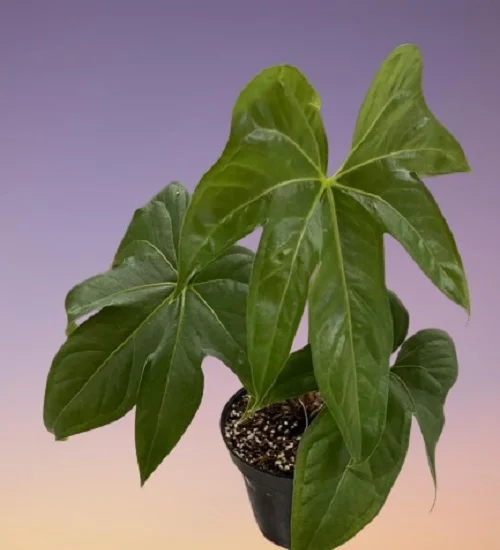
Anthurium pterodactyl is a a dark velvet cross between Anthurium clarinervium and Anthurium pedatoradiatum which grows a unique leaf shape (with fingers) as it matures; the heart-shaped leaf transforms into a triangular, lobed shape.
Anthurium pterodactyl is easy to grow and blossoms in bright indirect light, moderate warmth and humidity and moderately moist, well-drained soil that is rich in organic matter.
Feed Anthurium pterodactyl at least once a month during the growing season with a balanced water-soluble fertilizer to boost a lush growth.
14. Anthurium polyschistum (Weed Anthurium)
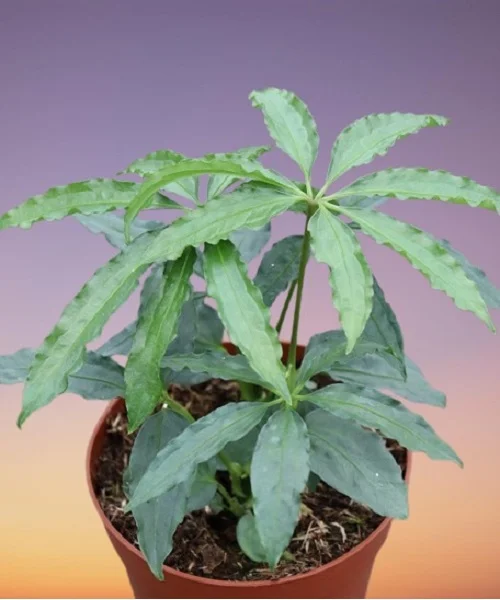
Anthurium polyschistum also called Weed Anthurium due to the resemblance in the leaf structure. It bears compound leaves comprising of 5 to 9 blue-grey, wavy leaflets giving it a palm-like appearance.
Anthurium polyschistum is native to the tropical rainforests in Colombia, Ecuador, Peru, Bolivia and parts of north Brazil. It is found growing as a hemiepiphyte; it starts off terrestrially on forest floors and then epiphytically on tree-trunks.
Anthurium polyschistum prefers above average humidity (60% or more), bright indirect light, temperatures of 15-350C, and moist, fertile, free-draining soil.
